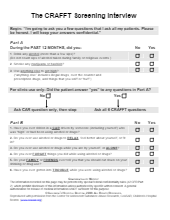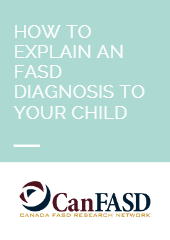The “Spiralling” educational toolkit is a comprehensive resource designed to address and prevent domestic abuse among children and young people. It features a compelling short film that portrays an abusive relationship, serving as a catalyst for important discussions about healthy relationships and the impact of domestic abuse.
The accompanying toolkit provides a wealth of activities and resources tailored to various age groups, enabling educators, parents, and professionals to engage children and young people in meaningful conversations about domestic abuse. Through interactive exercises, discussions, and reflective activities, the toolkit aims to raise awareness, promote empathy, and empower young individuals to recognise and prevent abusive behaviors.
By utilising the “Spiralling” toolkit, children and young people can develop a deeper understanding of healthy relationship dynamics, learn to identify warning signs of abuse, and acquire the skills needed to establish and maintain respectful and safe relationships. This comprehensive educational resource plays a vital role in fostering a generation that is equipped to prevent domestic abuse and promote healthier futures.
Spiralling Toolkit Guide (Activity Pack): Young People and Domestic Violence and Abuse
Spiralling Video
Contents of the toolkit:
- Introduction: why this toolkit and film were developed
- Section 1
- What is domestic abuse or violence?
- What has domestic abuse got to do with schools?
- What can schools do to help prevent domestic abuse?
- Some facts about domestic abuse
- Effects of domestic abuse on children
- Ways that domestic abuse may affect child safety
- Ways that domestic abuse may affect child welfare & development
- Ways that domestic abuse may affect children’s education
- The effects of domestic abuse on victims
- Ways schools can help children affected by domestic abuse
- Denial, minimisation and blame
- What makes domestic abuse more likely?
- What’s gender got to do with it?
- Section 2
- Themes for domestic abuse prevention
- What helps to prevent domestic abuse?
- Summary of themes
- Section 3
- How to use this toolkit
- Age
- Time
- Drama and nonverbal activities/games
- How to use the drama activities
- Thinking about attitudes
- Single-gender groups
- Other tips for activities
- Using original sources of information
- Using suggestion cards to stimulate discussion
- Suggested programs
- Exercises that may be done in isolation
- Suggested programs
- Whole school and assembly activities
- A guide to “Spiralling” film
- Sources of information and resources
- How to develop new activities
- Section 4
- Activities
- Warm-up activities: cooperation, negotiation, and nonverbal communication
- Walking
- Circle activities
- Competitive Games
- Lines and shapes: shared responsibility
- Mirroring
- Techniques for exploring stories: collaboration & positive relationships
- Sculpting, Introducing Comic Strip
- Developing sculpting; Types of relationships
- Comic Strips
- Gender
- Girls and Boys
- Courtroom game
- Attitude Statements
- Resolving an argument with a friend, relative, or someone else you know well
- What do I want in a relationship/friendship? What do I have to offer?
- Domestic Abuse: what do you know? Quiz
- With answers
- Explanatory notes for leading the quiz
- Introduction to the film “Spiralling”
- Who are the main characters in “Spiralling”?
- Why is Lucy with Nathan?
- Notes for discussion
- Watching the rest of the film “Spiralling”
- Introduction to forms of controlling behaviour
- What forms of controlling and manipulative behaviour does Nathan use…
- Notes on Nathan’s controlling behaviour
- What is domestic abuse?
- Excuses excuses: there’s no excuse for domestic abuse
- Notes on excuses
- Domestic Abuse – it’s criminal
- Notes for crimes activity
- Crimes and sentences
- Legal rights – a research and presentation activity
- Legal rights notes
- Warning signs of a potentially abusive relationship
- What makes it difficult for someone to finish with an abusive boyfriend…
- Reasons why Lucy is still with Nathan
- What could someone do instead of choosing to abuse or control their…
- What allows and helps an abusive person to abuse their partner/ex…
- Notes on what makes it possible for Nathan (and others) to abuse…
- What can friends do to help someone being abused?
- Spotting the difference between a potentially abusive relationship…
- Local services to help people being abused by partner or ex
- Section 5
- Safer relationships project
- Activity record book
- There’s something I want to tell you…
- Domestic Violence quiz
- The Film “Spiralling” introduction
- Controlling and manipulative behaviour
- What sorts of abusive behaviour might be included in a relationship where…
- What sorts of abusive behaviour does Nathan use against Lucy?
- What crimes might these be?
- Excuses, excuses
- Warning signs of an abusive relationship
- Why is it hard for Lucy to finish with Nathan?
- What can friends and other people do to help someone being abused?
- What legal rights does a victim of domestic abuse have?
- Crimes and sentences
- What’s the difference between an abusive relationship and an ideal one?
- Thinking about my friendships and relationships








